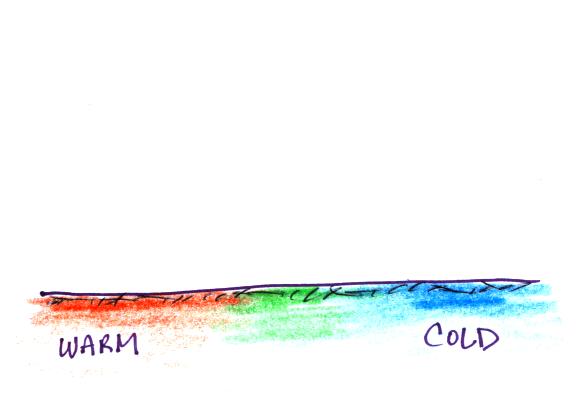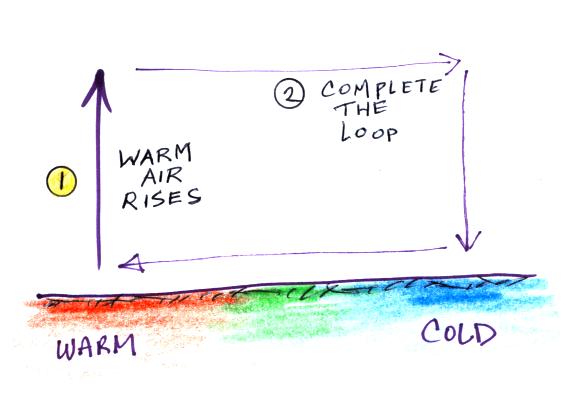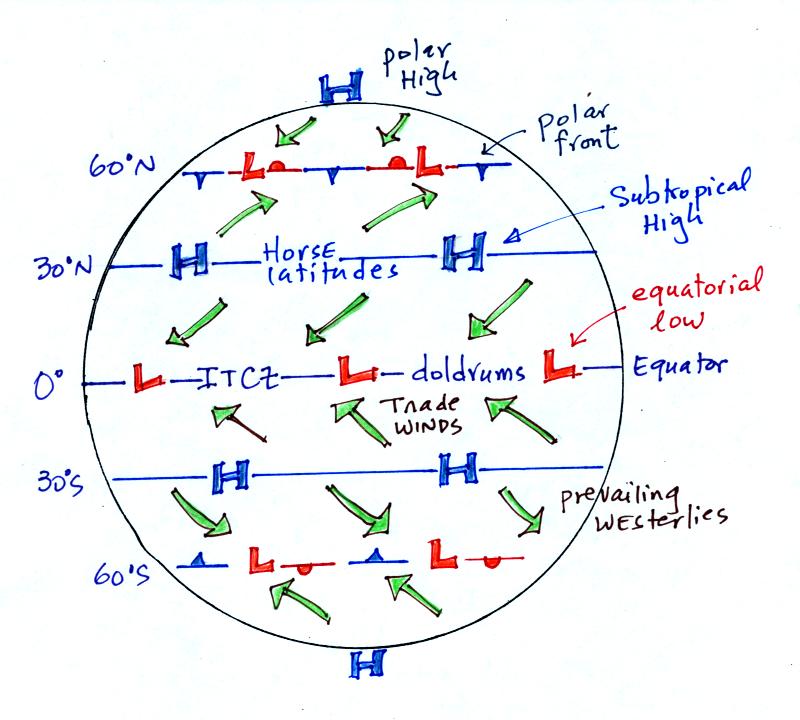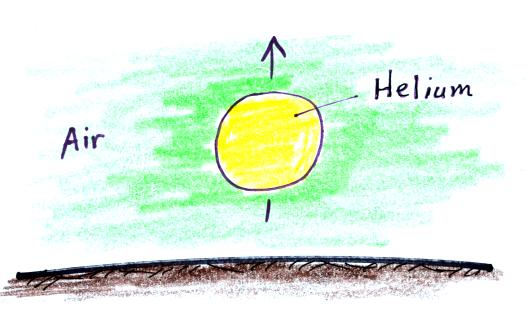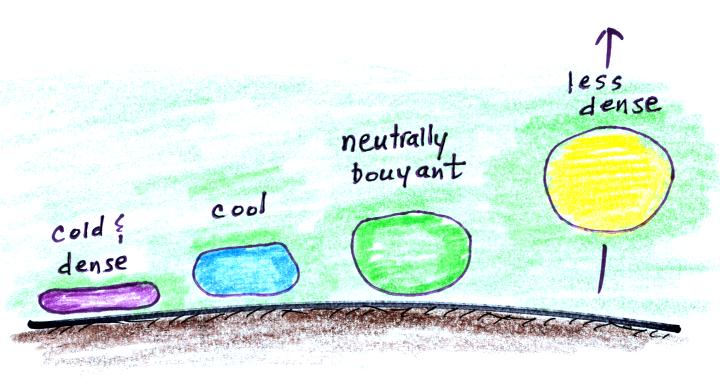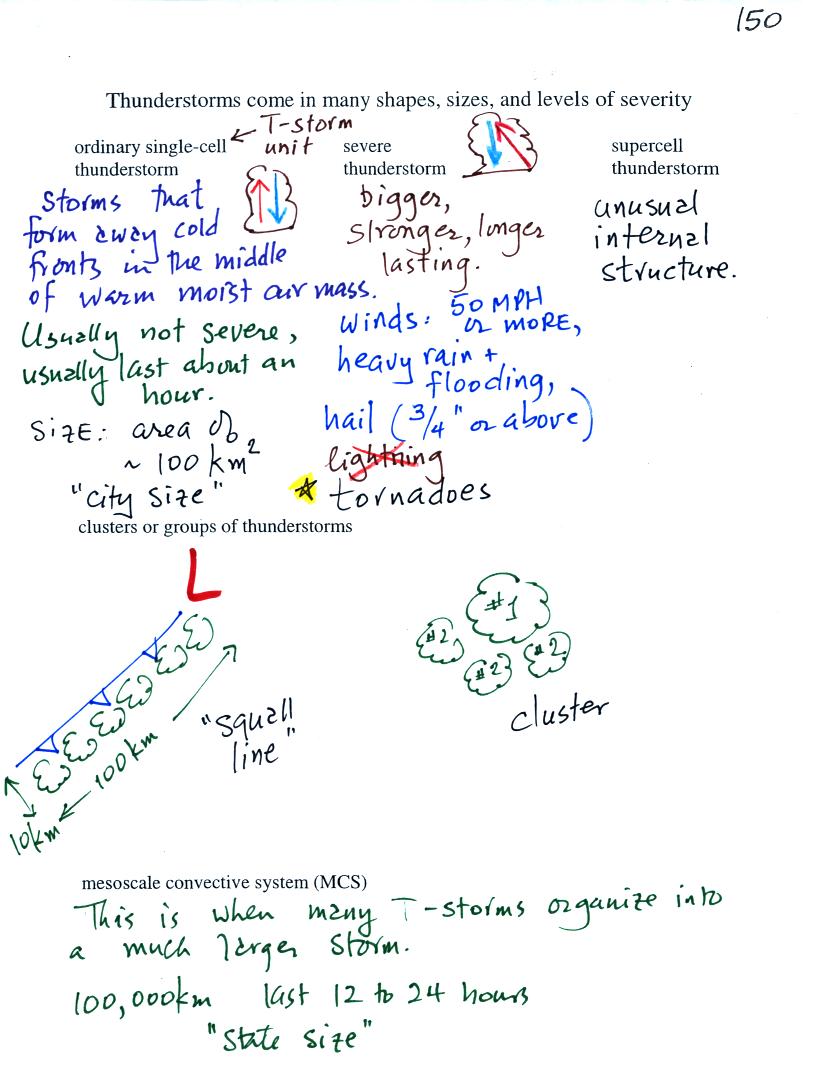Thunderstorms come in different
sizes and levels of
severity. We will mostly be concerned with ordinary
single-cell thunderstorms
(also referred to as air mass thunderstorms). The word cell just
refers to a single storm unit. Most summer
thunderstorms in Tucson are this type. An air mass
thunderstorm has a vertical updraft.
Tilted updrafts are found in severe and supercell thunderstorms.
As we shall see this allows those storms to get bigger, stronger, and
last longer. Storms with strong updrafts can produce large
hailstonges. Sometimes the tilted updraft will begin to rotate,
this can produce tornadoes. Supercell thunderstorms have a
complex internal
structure. We'll watch a short
video that shows a computer simulation of the complex air
motions inside a supercell thunderstorm.
Thunderstorms often form in clusters or lines. This is a multiple
cell storm system and can cover a larger area.
We won't learn much about mesoscale convective systems or mesoscale
convective complexes. These are much larger, "state size", storm
systems that can last 12 to 24 hours.
